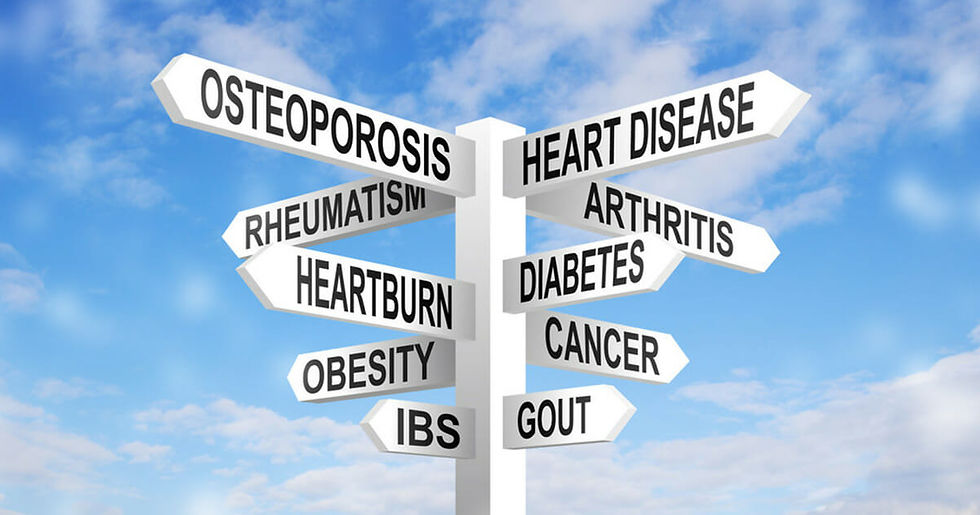Bile Issues and Related Health Conditions
- Terri Edwards

- Jul 1
- 3 min read

A digestive fluid that’s essential to a healthy body
It can be surprising just how many health conditions are related to bile issues. Bile, a yellow-green fluid produced in the liver and stored and concentrated in the gallbladder, is essential for a healthy body.
Conditions like dry, itchy, or damaged skin, weight gain, elevated cholesterol, constipation, chronic fatigue, infections, and even thyroid dysfunction can be related to bile issues (1) (2) (3) (4).
The main functions of bile
Bile breaks down dietary fats
Bile enables fat and fat-soluble vitamin absorption
Bile is the avenue of excretion for waste products like bilirubin and excess cholesterol
Bile alkalizes the acidic pH of stomach contents entering the small intestine
Bile is antimicrobial, protecting the intestines from infection by pathogens (5)
Bile issues and symptoms that follow
The liver produces bile, which is stored and concentrated in the gallbladder. When fats are consumed, bile facilitates their breakdown and absorption so that the body can use fatty acids, like omega-3 fatty acids, and fat-soluble nutrients like vitamins A, D, E, and K (6).
When bile production, secretion, or flow decreases (cholestasis), the individual may notice symptoms like itchy or yellow skin, darker urine, and pale stool that tends to float and is looser due to the lack of bile and excessive fat excretion (6). Bile flow can be obstructed anywhere between the liver and the small intestine in the biliary system (3).
Further symptoms of sluggish bile include: an inability to lose weight, feeling queasy or nauseous after a fatty meal, constipation, bloating and gas, pain or discomfort under the right rib cage or between the shoulder blades, and mood changes (7).
Insufficient bile consequences
The liver produces about 30 fluid ounces of bile daily (8). When bile production or flow decreases, fats are not properly processed, toxins and wastes are not properly excreted, cholesterol is not broken down and eliminated, colonic motility slows, and fat-soluble nutrients become deficient over time.
When fats are not properly broken down and digested (malabsorption) because bile is insufficient, the body can become malnourished as fatty acids and fat-soluble nutrients are not absorbed by the body (9). So, even though you may be eating healthy fats, you can become malnourished if the body can’t absorb them due to insufficient bile. Fatty acids are used for energy and cell structure by the body, and when these are deficient, there can be unintended weight loss and cell dysfunction that can lead to metabolic issues (10). When fat-soluble vitamins like vitamin E become deficient, the immune system can weaken, blood vessels can narrow and lead to cardiovascular complications, and cells are vulnerable to free radical damage (11).
When toxins and wastes build up due to insufficient bile flow, they get trapped in the body and create inflammation and damage to tissues like the liver. Over time, this can lead to conditions like fibrosis, cirrhosis, and even liver failure (12).
When cholesterol is not broken down and eliminated because bile is not present in sufficient amounts or is sluggish, the cholesterol can leak into the blood, increasing blood levels (13) (16). When levels increase in this way, cholesterol becomes concentrated in the bile, which can lead to the formation of gallstones (13).
Gut motility slows when bile acids are insufficient, as receptors in the colon wall are not activated and the fecal matter remains in the colon longer, leading to constipation (14).
Tips for increasing bile flow (7) (15)
Consuming beets (betaine) can thin the bile
Consuming bitters like chicory, dandelion, hibiscus, arugula, and raddichio can thin the bile
Consuming diluted apple cider vinegar can thin the bile
Taurine, choline, fiber, betaine hydrochloride, and ox bile can also be helpful for some







Comments